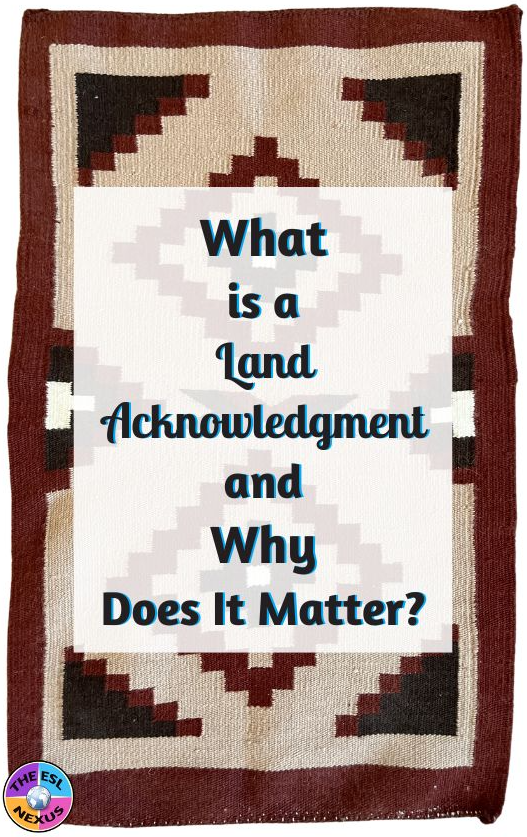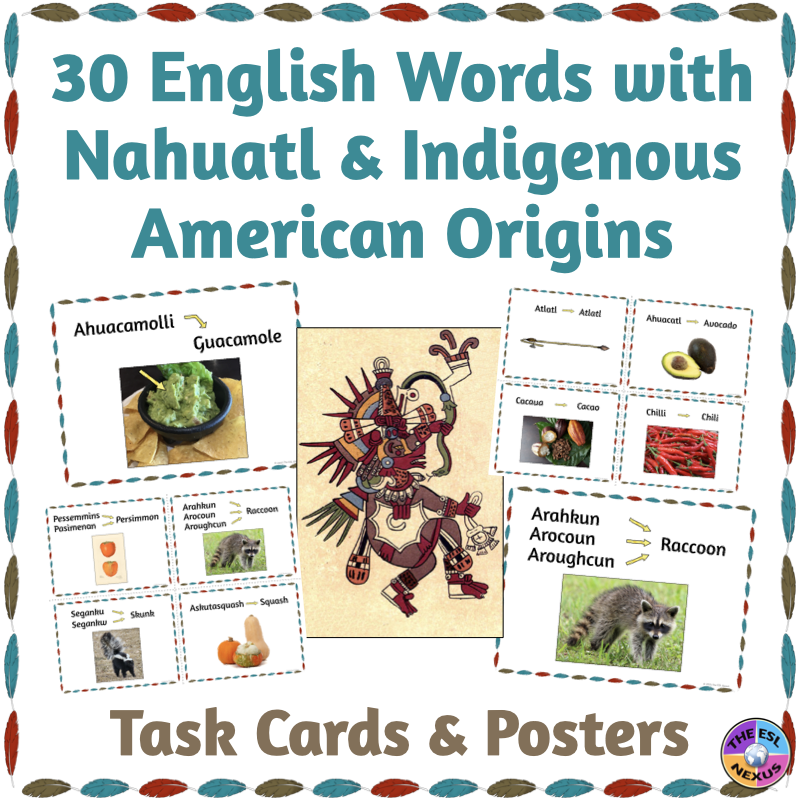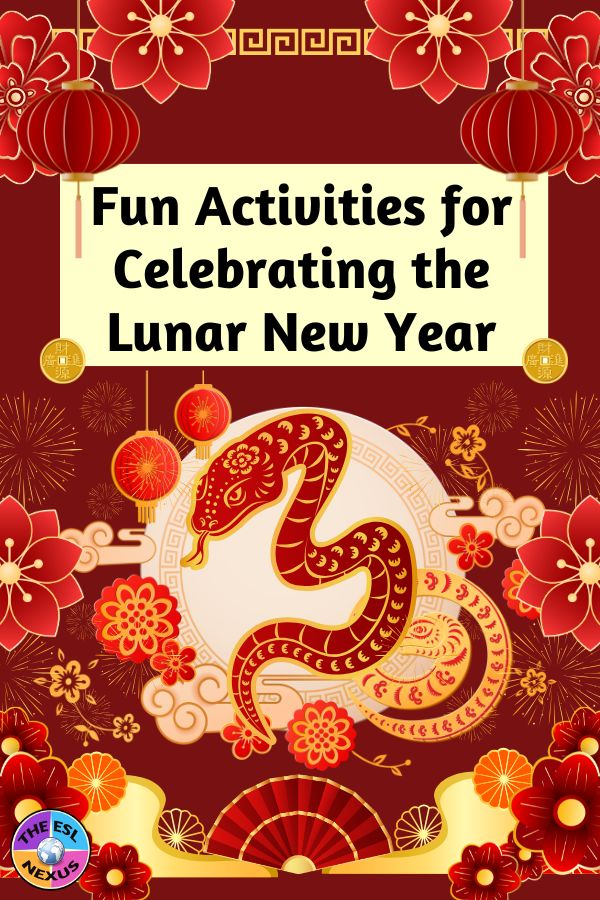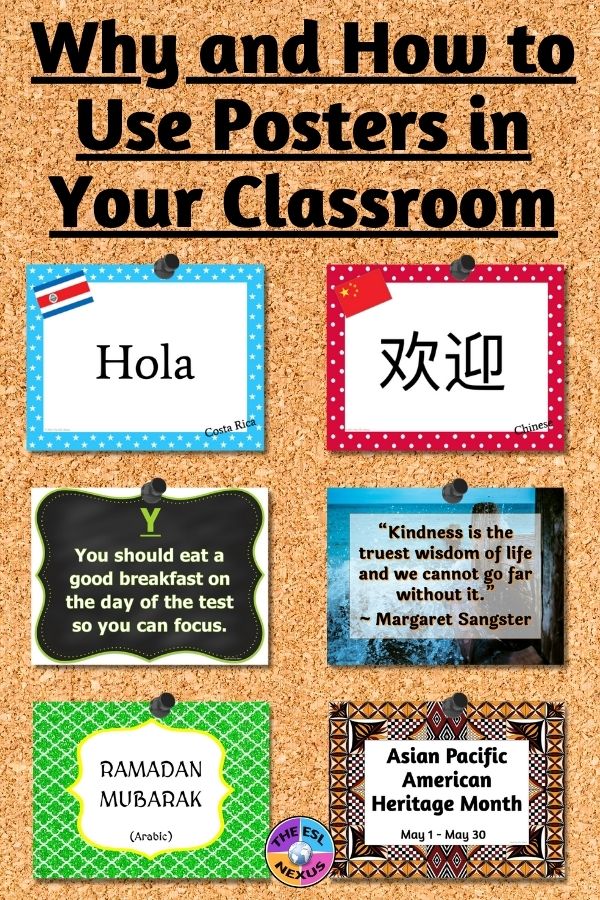The first time I encountered a land acknowledgment was in the closing credits of Mystery Road, an Australian TV show. It said the show was filmed on the lands of three Indigenous Australian communities and the producers thanked the traditional owners. The next time I heard of this practice was when my cousin mentioned it was part of her California college’s orientation for first-year students.
So what is a land acknowledgment and why is it important? Since November is Native American Heritage Month, I decided to write a blog post about it. I’ll also add a note about terminology at the end of this post.
 |
| Source: The ESL Nexus |
Definition of a Land Acknowledgment
In its simplest form, a land acknowledgment is a sentence recognizing that an area was originally settled or used by a particular Indigenous community. It’s a statement that expresses respect for the people who were there before the current users of the land.
A land acknowledgment can also go beyond a factual statement of who used to live on the land. It is one way of showing that Indigenous people are still present and active in society. It can honor Indigenous people who work in the same field as the person making the land acknowledgment. It can also provide a starting point for addressing the wrongs that were committed against Indigenous people.
When is a Land Acknowledgment Made?
Historically, many Indigenous community activities began with a prayer that acknowledged the land they lived on. This practice was adopted and adapted by New Zealanders, Australians and Canadians and is now becoming more common in the U.S.
A land acknowledgment is made when someone wants to express gratitude to the Indigenous people who took care of the land before it was colonized by Europeans. Frequently used at the start of an event or activity, it’s intended to show appreciation of the Indigenous people whose land is currently being used by other people. A land acknowledgment can be made at the beginning of a meeting or class, when a government building or school or museum is constructed on Indigenous land, and at the start of a religious service or sports event.
How to Find Out which Indigenous Community to Acknowledge
If you don’t know on whose traditional land you reside, work, or participate in activities, the easiest way to find out is to search online for the information. Native Land is a website displaying a land acknowledgement map you can use to get started. You can also contact your local library and ask the reference section, which is what I did when the online info wasn’t clear to me. Another source may be a local college – you can call and ask if there is an Indigenous Studies program or office that can help you.
Appropriate Ways to Do a Land Acknowledgment
Stating that your home or activity or building is on Indigenous land is a beginning. You might want to consider who is an appropriate person to make the land acknowledgment: Inviting a local person from the Indigenous community would make the acknowledgment more meaningful.
But a land acknowledgment can go a lot further than mere words. It can and perhaps should suggest concrete ways that the current users of the land will support the Indigenous people who came before you and who still live in the area. A good land acknowledgment demonstrates realization that the present occupiers of the land were not the first users of it, that an Indigenous community stewarded the land before it was taken from them, and that Indigenous people have not disappeared from the land and have much to offer the current users of it.
Where to Find Land Acknowledgment Examples
* The Native Governance Center provides a list of tips and questions for crafting a land acknowledgment.
* The National Environmental Education Foundation has a 3-step guide on its website for how to create a respectful land acknowledgment.
* The American Indians In Children’s Literature website has helpful suggestions.
* The U.S. Department of Arts and Culture (which is not a Federal Government agency) offers free virtual backgrounds that include land acknowledgments.
A Note about Terminology
A couple of my TpT resources are about the U.S. Thanksgiving holiday. One of them is a set of task cards about a traditional Thanksgiving meal with word problems whose answers are fractions.
The other is a set of word search and crossword puzzles about Thanksgiving with 20 vocabulary words about the holiday. It also includes a reading passage about the Wampanoag people and English settlers; the text discusses the origins of the holiday and why some people no longer celebrate it.
One of the vocab words is Indian. Although I know that that word is no longer considered the best way to identify Indigenous people, I included it for a couple reasons. First, the National Museum of the American Indian, part of the Smithsonian Institution, says it is acceptable although of course the best thing to do is ask someone what they prefer to be called. The other reason I included it is because English Learners will most likely hear or read the word in school so consequently I think they should be aware of it, especially if they are reading primary source documents where it is often used.
But another of my TpT resources is about words in English that are derived from Indigenous North American words. There are 18 words from Algonquian languages and 12 words from Nahuatl. The words are presented as task cards and 8.5” x 11” posters and come in color and black-and-white. This resource also includes maps showing where the languages were/are spoken. If you prefer not to teach explicitly about the Thanksgiving holiday during Native American Heritage Month, you might prefer this resource instead.
 |
| For more info about this resource, please click HERE |
More Information
If you are looking for additional activities for Native American Heritage Month, you might find this blog posts helpful:
* 8 Thanksgiving Books That Even ELLs Can Read!
This blog post was written in my home office, which is located on the ancestral lands of the Tohono O’Odham people in what is now Arizona.




